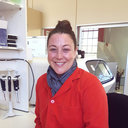Alteration in Kupffer cell function after mild hemorrhagic shock.
Ključne besede
Povzetek
Functional changes in Kupffer cells occur after profound hemorrhagic shock. This study was performed to demonstrate if Kupffer cell changes also occur after mild hemorrhagic shock. Sprague-Dawley rats were bled to a systolic blood pressure of 60 to 70 mmHg and resuscitated with Lactated Ringers solution (twice the shed blood volume) after 30 min. Resuscitation produced immediate recovery of blood pressure and allowed long-term recovery of the animals. Sham animals received anesthesia and monitoring only. Thirty minutes after resuscitation, Kupffer cells were isolated by centrifugal elutriation and cultured for 48 h. In Kupffer cells isolated from shocked animals, phorbol ester-stimulated superoxide production increased 7-fold and lipopolysaccharide- (LPS) stimulated prostaglandin E2 (PGE2) production increased 4-fold. Tumor necrosis factor-alpha (TNFalpha) production, on the other hand, was decreased by 50%. A non-significant trend toward increased phagocytosis was also observed, whereas LPS-stimulated nitric oxide production was unchanged. In conclusion, mild hemorrhagic shock produced increases in superoxide and PGE2 production, and decreases in TNFalpha production by Kupffer cells, changes that may be appropriate to defend against the infectious challenges that often follows trauma and hemorrhage.


